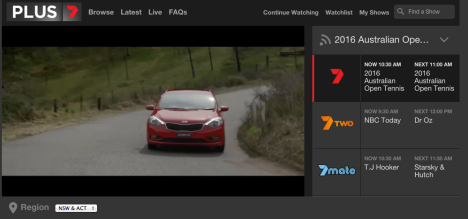OzTAM backflips on catch-up TV ratings rules; Southern Cross Austereo demands breakdowns
Television measurement service OzTAM has been forced to do an awkward backflip on rules that prevented TV Networks from combining new catch-up TV data with the average TV audience viewing figures.
 Less than five days after OzTAM vowed to “reinforce” the rules, after both the Seven and Ten networks openly flouted the restrictions, the organisation yesterday issued new rules that now allow the agency to combine national device data with audience numbers.
Less than five days after OzTAM vowed to “reinforce” the rules, after both the Seven and Ten networks openly flouted the restrictions, the organisation yesterday issued new rules that now allow the agency to combine national device data with audience numbers.

Peiffer: “It’s undercounting we don’t know how many people are in front of that device.”
“There is at least one person in front of that device,” said Doug Peiffer, CEO of OzTAM. “If anything, we are probably under-counting on the VPM side because at this point we don’t know how many people are in front of that device.”


What a crock.
Brian is right- regionals should have access to their audience numbers.
This is a desperate move by desperate sales directors in metro markets.
Why don’t we also report page impressions alongside OZTAM TV numbers, and why not show click thru rates next to them too…..THIS ALL MAKES NO SENSE for a leading body to allow this to happen
Hey buyer … do the regionals have video streaming services?